| The Secret of the San Joaquin River Delta... |
|
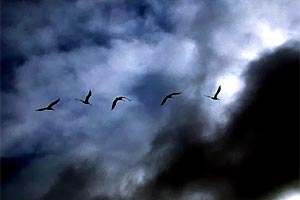 CLOVIS
- For centuries, Clovis ranching along the the San Joaquin River and Big Dry Creek
area has co-existed with wetland wildlife of abundant number and variety. The
wild things which live on this once damp prairie biome have flourished because
of a strict ranching ethic and an unlimited water supply which supported their
every need. In response to public interest, the Valley Press Media Network, publisher
of the Clovis Free Press Newspaper, announced on Saturday it has established the
Clovis Wetlands Conservancy to research and report on public concerns about
the safety of Clovis area drinking water, and on availability of surface water
irrigation for Valley ranchers. The Conservancy provided a little glimpse of the
Wetlands history in its Press release. CLOVIS
- For centuries, Clovis ranching along the the San Joaquin River and Big Dry Creek
area has co-existed with wetland wildlife of abundant number and variety. The
wild things which live on this once damp prairie biome have flourished because
of a strict ranching ethic and an unlimited water supply which supported their
every need. In response to public interest, the Valley Press Media Network, publisher
of the Clovis Free Press Newspaper, announced on Saturday it has established the
Clovis Wetlands Conservancy to research and report on public concerns about
the safety of Clovis area drinking water, and on availability of surface water
irrigation for Valley ranchers. The Conservancy provided a little glimpse of the
Wetlands history in its Press release.
Valley Press Media Network spokesman, Dr. Howard Hobbs told
reporters, "Today, expansive Clovis area urban developments, and nearby metropolitan
areas have severely impacted the original nature of this once-great Clovis wetland.
Hobbs, concluded, "By subdividing the available arable farm land near the
city, planners have degraded both land and water resources needed to provide a
viable food source".
Data released by Valley Press Media contains hopeful findings
that some Clovis ranchers have adapted to these incursions by introducing an ingenious
computerized microprocessor irrigation system that takes available surface water
and micro-manages its above ground distribution. The costs and labor-intensive
management required for these innovations is added burden on the Central California
rancher's dwindling resources.
|
| Watershed and Wetlands Management... |
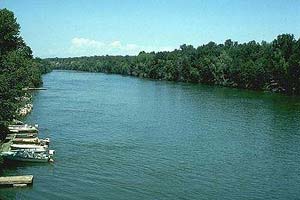 Almost half the listed species in California's West Side are plants, many of which are victims of land and agricultural development. In addition, rare, showy, or unusual plants, are often illegally sought by collectors or unscrupulous dealers. Almost half the listed species in California's West Side are plants, many of which are victims of land and agricultural development. In addition, rare, showy, or unusual plants, are often illegally sought by collectors or unscrupulous dealers.
Recovery efforts are now well under way. Many large West Side land owners have shown their willingness to support conservation measures for endangered plants and animals.
|
| Wildlife Awareness and Preservation... |
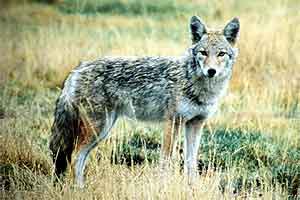 Once commonplace to the Clovis Wetlands at the turn of the century, was
the Red Wolf. This animal has been squeezed out of its natural habitat throughout
California.
Once commonplace to the Clovis Wetlands at the turn of the century, was
the Red Wolf. This animal has been squeezed out of its natural habitat throughout
California.
By the early 1970's this endangered species existed only in 22 captive breeding facilities.
Due to tremendous public support, intensive management, and additional reintroduction and propagation projects, there are now more than 20 Red Wolves in the wild.
|
| Education About Environmental Impact... |
|
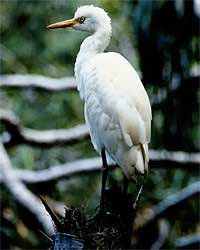 Lesser known endangered species such as insects, reptiles, and crustaceans, are
just as important to the Clovis Wetlands ecosystem.
Lesser known endangered species such as insects, reptiles, and crustaceans, are
just as important to the Clovis Wetlands ecosystem.
Why save endangered species? One compelling reason is that each species on the Earth plays and important role in our ecosystem. When a species becomes endangered, it is an 'early warning' that something is wrong with the intricate network of plant and animal communities in our own natural world.
Every species has value to human beings. Some, more than others. For example, cancer fighting drugs have been derived from the bark of the Yew tree which is a native of the Pacific Northwest.
The cause of human decline is tied to the worldwide habitat
destruction. Disease, predation, inadequate conservation policies, pollution,
and introduction of nonnative species all contribute to that decline.
|
| ...Farming
Without the San Joaquin River. |
|
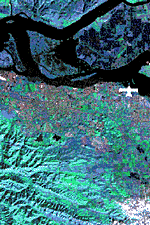 The
geographic scope of the ecological influence of the San Joaquin River environs
can be glimpsed in the satellite view of the San Joaquin River Delta and the related
estuary leading to San Francisco Bay. However, the San Joaquin River no longer
runs through Central California's West Side. A large portion of that water supply
needed by farmers in the San Joaquin Valley has been diverted to the City of Los
Angeles. The
geographic scope of the ecological influence of the San Joaquin River environs
can be glimpsed in the satellite view of the San Joaquin River Delta and the related
estuary leading to San Francisco Bay. However, the San Joaquin River no longer
runs through Central California's West Side. A large portion of that water supply
needed by farmers in the San Joaquin Valley has been diverted to the City of Los
Angeles.
Inefficient water inflow to the San Joaquin River
Delta, over time, has degraded river drainage all the way to Stockton.
West Side farmers are now required to obtain surface water from an entirely
different source, the California Aqueduct, a Sacramento River delta
diversion.
Another side-effect of diverting the river to municipal
customers is that there are too few tidal marshes remaining for fish
and wildlife resources dependent upon them for survival, after the riverbed
went dry.
So, today the Clovis rancher has to be creative and resourceful
in working around natural and human processes which directly affect his productivity
and staying power.
One source of overcoming formidable challenges to
the future of farming is the information revolution. With the use of
a personal computer and the Internet, every farmer can instantly access
world market prices, and chat with buyers and sellers across the international
borders of the world.
Today's ranching is the science of tomorrow's world. Even
if our San Joaquin River doesn't run through it anymore!
|